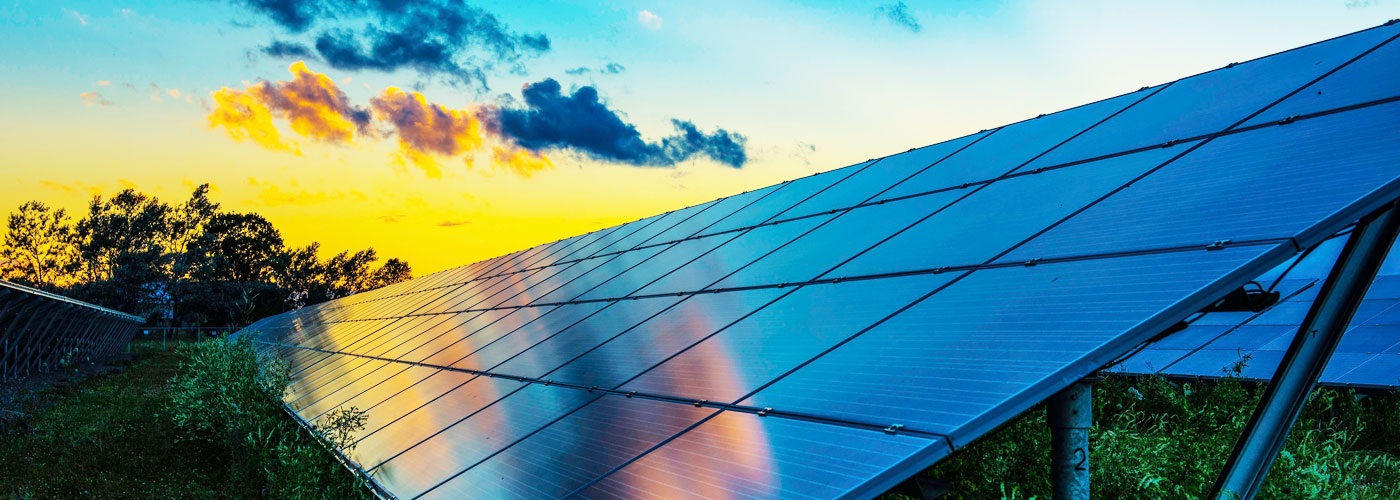In 2015, the clean energy market reached $200 billion in the U.S. and hit $1.35 trillion globally—nearing the value of the entire global entertainment and media market (including everything from newspapers to video games to television and movies). Since the 2008 financial crisis, more than 1 in every 80 jobs has been created in this sector.
In 2015, the global clean energy market hit $1.35 trillion—nearing the value of the entire entertainment and media market. Tweet This Quote
After ten years of working with thousands of entrepreneurs to fund their clean energy projects, I’ve learned how things can go right—and wrong—as they seek capital.
At SunEdison, now the largest global renewable energy development company in the world, we proved that the key to implementing solar solutions is using “no money down” project finance models. Eliminating the upfront cost of solar solutions turned out to be the business model innovation that was able to allow these “non-essential” projects to get the approval necessary from the CFO—the person charged with the purse strings.
Now at Generate Capital, we are bringing project capital to more of these resource efficiency solutions beyond just solar energy. As a specialty finance company with permanent, flexible capital, we partner with a diverse group of project developers and technology manufacturers globally. Though project types vary, the entrepreneurs share many behaviors that limit the chance of financing their clean energy projects.
Investors are looking for assertive CEOs who take reasonable action to reduce a project’s risks. Tweet This Quote
Specifically, I remember meeting a solar entrepreneur who had a plan to cover all waterways with solar panels to reduce evaporation. When I asked about the economics of his proposal, he simply said there was a drought in California, and it would be a good idea for the California Government to pay for the extra costs. This is not a bad idea to discuss at a barbeque, but it makes no sense to present this formally to a project finance investor without having the revenue streams nailed down.
Unfortunately, this kind of conversation happens far too often. To ensure the best people and projects are securing the capital they deserve, here are 5 actions for clean energy entrepreneurs to avoid:
1. Limiting disclosed information
Every entrepreneur believes their project is special and has some important “secret sauce.” However, withholding key information on a project raises numerous red flags for investors who want to work with entrepreneurs and developers they can trust—a financing relationship is a form of partnership, after all. If a partner is evasive upfront (or at any point), it doesn’t bode well for the future of the relationship. Entrepreneurs should understand that an investor won’t risk millions of dollars on a project without turning over every possible stone in order to manage that risk they are taking.
An investor won’t risk millions of dollars on a project without turning over every possible stone. Tweet This Quote
This is especially true, for example, when entrepreneurs withhold key contact information. If you’re unwilling to put us in touch with one of your suppliers, engineers, or contractors, we may assume these contacts have negative information about the project that you don’t want us to discover. Every project has complications. Be upfront about a project’s risks and come up with a strong mitigation plan. Investors are looking for assertive CEOs who take reasonable action to reduce their potential downside.
2. Sending misspelled, grammatically incorrect, or poorly formatted emails
Emails related to requests for millions of dollars from respected and experienced investors should not be confused with BFF texts. Investors are looking for competent partners for projects they are risking their time, money, and reputation to make happen. Entrepreneurs should be thoughtful about the logic they use when presenting their case. When we receive incoherent materials with misspellings, incorrect grammar, or sloppy formatting, we become worried about your professionalism and attention to detail.
Treat your communications with the same care and dedication we hope you’re bringing to your projects. Tweet This Quote
In one case, an entrepreneur submitted a proposal using a church as their example. When we asked basic questions, we realized the church was not an actual project—instead, the entrepreneur was trying to highlight that parking lots (often found at churches) could be used for solar projects. Furthermore, the basic numbers were incorrect in the presentation that made the returns 8% instead of 18%. The entrepreneur had a good business idea, but they obviously put the presentation together so hastily that we had to reject the deal. Treat your communications with the same care and dedication we hope you’re bringing to your projects.
3. Claiming a deal is “shovel ready” when it isn’t
“Shovel ready” doesn’t just mean you’ve identified the dirt and bought the shovels. We’ve heard the deal is “ready to go and only needs financing” countless times. It’s rarely true. Unless all the permits are in, the building supplies are on site and workers are awaiting a phone call to break ground, the project probably needs more work before it’s truly “shovel ready.”
Investors want to invest in your next big project as well, if this first experience goes as planned. Tweet This Quote
Be upfront and transparent about the steps remaining before a project can be built. Manage the expectations of investors so they trust you. You want the process to be as smooth as possible; remember, these investors want to invest in your next big project as well, if this first experience goes as planned.
One entrepreneur called once and said, “My project is basically ready to go, but if I don’t get this deposit paid by Friday, I am going to lose the project.” We prioritized the deal over a few others we had pending. Once we dug into the details, we realized that certain key permits were missing. Although the deadline was real, there were fairly simple ways to apply for an extension. The deal was a good one, but after misrepresenting the status of the project—even if it was unintentional—we lost interest in working with this entrepreneur who clearly didn’t value our time.
4. Saying “I just need $Xm to clear the next hurdle,” or “As soon as I get $Ym, I’ll get [insert key document] signed”
In addition to saying “shovel ready,” a sure way to put off an investor is to appear like you are repeatedly scrounging for cash to get your project through early roadblocks. This demeanor and language certainly won’t inspire confidence that you can keep costs under control for the rest of your project or manage the details required for success. Once investors help with one hurdle, we anticipate there will likely be another, and we don’t want our money stranded in a project that will never get built.
Be honest, maintain clear and transparent communication, and proactively manage your risks. Provide realistic assumptions for the full capital needs of a project’s lifetime as well as the risks associated with each project gateway.
Investors look for competent partners for projects they risk their time, money, and reputation to make happen. Tweet This Quote
5. Promise fixed returns
Don’t ever say, “We guarantee an 18% IRR!” Leading with a high rate of return in the headline may seem like it will generate a great reaction, but in practice it disrespects the investor’s intelligence and signifies an inexperienced entrepreneur. A financial model can be manipulated to display specific results. Investors will undoubtedly evaluate your project based on their own assumptions and metrics regardless of the models provided.
Instead, offer the investor as much detail about a project’s financials as you can. Identify the key assumptions that could vary, and show what happens when they do. In all partnerships, there are hard times and unexpected twists—be a realistic and willing partner.
Be honest with investors, maintain clear and transparent communication, and proactively manage your risks. Tweet This Quote
The process of getting your first few projects funded is hard. Remember, investors make money by putting their capital to work, not sitting on the sidelines. Investors are paid to limit their downside risk while earning a fair return. They are more likely to work with folks they find trustworthy. Entrepreneurs can build trust by being honest and transparent about risks and proactively uncovering the typical twists and turns.
Projects rarely turn out exactly as they are supposed to—investors know that. Success in the clean economy is a long-term prospect, and both the best entrepreneurs and investors get that too.



